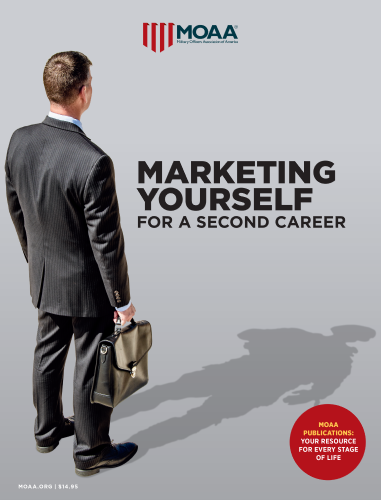Networking is arguably one of the most important elements of a successful career transition, and LinkedIn is arguably the most popular professional platform where networking takes place. But not all LinkedIn profiles are created equally.
To get noticed by prospective employers, and stand out from your veteran peers, consider the following 10 tips:
1. Sharpen your image. Take a headshot in civilian clothes (appropriate to the industry/role you are seeking) with a neutral background and warm smile. This does not have to be a professional headshot, but it shouldn’t be a selfie. Enlist a helper to click your pic!
2. Customize the banner background. Choose a banner with an image that speaks to your personal and/or professional brand. Don’t overthink it – a city landscape where you live or an industry-themed image (such as an airplane for the aviation industry) would work.
[RELATED: MOAA's Networking and Social Media Resources]
3. Craft a compelling headline. This section below your name speaks to your brand, or to what you want to do next. When done well, it can be an attention-grabber. If you are not sure what you want to do next, your current title is fine.
4. It is all ‘About’ you. The “About” section is where you market your value proposition – the skills and strengths you bring to the table, and the impact you would like to make on an organization. Unlike the summary section of a résumé, the use of personal pronouns – “I,” “my,” and so on – is expected. Remember, this is not a bio: Keep it brief and use plain language – no military jargon!
5. Personalize your LinkedIn URL. This small tweak will make your bio or résumé look much more professional. Do this on your profile page – click “View Profile” under the “Me”, click “Edit Your Public Profile” then simply delete the alpha-numeric hangar at the end. Note: Those with common names may find their preferred URL is already taken; consider a middle initial or other identifier.
6. Location, location, location. Like real estate, location matters because recruiters often begin their search criteria there. To optimize your ability to be found, consider using the largest metropolitan area near where you’ll geographically live.
[RELATED: Your Most Useful LinkedIn Connections May Not Be the Ones You’d Expect]
7. Relevant experience matters. When it comes to experience, include the past 10-12 years of employment with a short description of the roles you’ve held and a few impact statements or achievements connected to those positions. This gives you a chance to include industry-specific keywords for the search algorithm.
8. Education matters. List your highest degree first in the education section, and use the alumni function to find alums who work for a particular company, or in an industry of interest.
9. Skills matter. Skills are incredibly important when it comes to being identified by recruiters and determining your fit for a job. There are 50 slots, and your top three skills are likely to gather endorsements, so choose wisely.
10. Are you ‘Open to Work’? Selecting this option can increase your profile views by 40%. Remember, you can choose who can see that feature – LinkedIn breaks down how to make “Open to Work” work for you.
Download Marketing Yourself for a Second Career
Newly updated! Learn what you can do to prepare yourself for a successful transition from military career to civilian career. This handbook shows you how to create an attention-getting resume, cover letter, and more. Get tips on self-marketing, job search, interviews, and interviewing. (Available to Premium and Life members)


